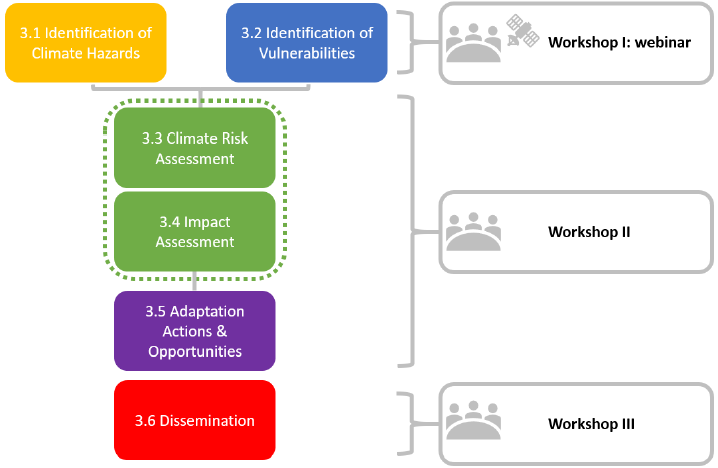C40 is supporting a small set of pilot cities develop and update their climate action planning (mitigation and adaptation) to ensure it meets 1.5°C Paris agreement level of ambition. The City of Durban (eThekwini Municipality) is one of the cities participating in the pilot. Climate Adapatation Services and FutureWater together provide services for the updating of climate and socio-economic projections and to conduct a risk and vulnerability assessment. There is a need to update previous assessments so that identification of risks and hazards are based on most recent, up to date climate projections, which can inform decision-making and action prioritisation.
Our climate is changing and cities are facing the consequences. Accessibly tailored climate information is an essential requirement for effective adaptation in cities. Over the years we have learned that for cities to act, it is important to visualize climate information in such a way that it ‘connects’ with priorities of the city. Adaptation should not be a ‘top-down’ activity. Adaptation needs to be ‘mainstreamed’ into various activities that the municipality undertakes. This means climate change needs to be communicated to a wide range of people from different departments. Key to our approach is that we will build the story of climate change adaptation together with the municipality. Our approach is about co-producing a Climate Story Map together with the municipality of eThekwini. Together we bridge the gap between climate science and city level action, going the last mile by translating climate impact information to policy relevant and usable science and embedding that information with the relevant stakeholders.
Key elements in the CAS/FutureWater approach:
- Strong stakeholder interactions, co-creation processes with ample attention for interactive design supported by visualizations;
- User-centered and easy-to-understand visualization tools to present the results;
- Products built on platforms that are proven, stable, reliable and easily transferable;
- Combination of bottom-up and top-down approaches;
- Integrated approach balancing natural sciences and social, economic and environmental assessments;
- Methods based on the latest developments in climate and adaptation science.
At least two types of adaptation approaches can be identified: top-down and bottom-up, both having advantages and drawbacks. A typical top-down approach uses global development scenarios, where different societal and technological developments are described with associated greenhouse gas emissions and climate models to identify climate impacts at various scales and define adaptation needs. This provides insight into a range of future changes but often produces results less relevant for municipal contexts. Bottom-up approaches focus on understanding root causes of local vulnerability to climate change and use participatory processes to address these in adaptation strategies. This can give less importance to physical factors but provides legitimacy through the involvement of people on the ground. These approaches are also less reliant on climate models —which can have limited value at the municipal scale— and take current local vulnerabilities into account. Most current approaches are top-down and focused on large-scale technological interventions, dominated by natural sciences, and are monodisciplinary or sectoral. This is often in conflict with municipal practice where local adaptations focus on integrating social, environmental, and economic dimensions. While both approaches play important roles in planned climate adaptation, merging best practices can be beneficial. This is what we aim to do.
The figure below summarizes our approach, consisting of six steps.
Related publications
2018 - FutureWater Report 178
Updated Climate Change Projections for eThekwini Municipality
Lutz, A.F.



